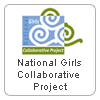This proposal was submitted in response to the STEM + Computing Partnerships (STEM+C) program solicitation NSF 15-537. The STEM+C program seeks to advance new approaches to, and evidence-based understanding of, the integration of computing in K-12 science, technology, engineering and mathematics (STEM) teaching and learning. Twin Cities Public Television in partnership with the National Girls Collaborative Project (NGCP) and the University of Minnesota Learning Technologies Media Lab, will implement A National Connected Learning Model to Integrate Computing in STEM Learning with Middle School Girls. Even though technology is pervasive in modern life, women continue to be underrepresented in computer science (CS) study and professions. Decades of research suggest the issues that contribute to CS pipeline deficits are complex, and they begin early. Although girls and boys do not display a significant difference in their abilities in math and science, research suggests that the cause for the gap in CS is social and environmental. A contributing factor consistently mentioned in the literature is that girls often do not feel they belong in CS classes, because boy peers have more experience with the concepts being taught from exposure to coding outside of school. Furthermore, research suggests that CS courses can isolate girls by their very design with: 1) curriculum that is irrelevant; 2) pedagogies that discourage collaboration; 3) lack of opportunities to take risks and make mistakes; and 4) heavy reliance on lecturing instead of hands-on, project-based learning. Connected learning pedagogy, where youth make things, work on projects they find personally relevant, and have open access to project tools and materials, addresses these issues head-on. Likewise, designing experiences for girls that employ best practice strategies for gender equitable teaching can help diminish the gap in CS. SciGirls Code will offer the CS education field a new model for using digital media to empower girls, role models, and STEM educators, ultimately enriching and supporting girls' pursuit of CS in academic settings.
This two-year pilot program will use principles of connected learning with 16 STEM outreach partners to provide girls and their leaders with computational thinking and coding skills. Findings will inform scale-up within the broader network of girl-serving STEM programs nationwide. Project goals are to: 1) spark and strengthen girls' interest, skills, and confidence as technology creators before high school, when attitudes and academic choices can influence postsecondary CS studies and careers; 2) support girls' efforts by training educators and role models in best practices for engaging girls in gender equitable STEM education; and 3) contribute to the field by researching the connected learning model for out-of-school learning of CS. These goals will be reached by the following activities: a nine-month curriculum centering on three tracks, including e-textiles and wearable technology, robotics, and mobile geospatial technologies; role model training for women technology professionals; professional development for STEM educators; and a research component to inform program success, impact and refinement. The project is grounded in a connected learning approach, which is based on social learning theory, that postulates that the active support of trained educators and role models will boost the development of middle school girls' computational thinking skills, attitudes towards computing pathways/careers, and understanding/appreciation of how participation in technology creation impacts themselves and the world around them.







